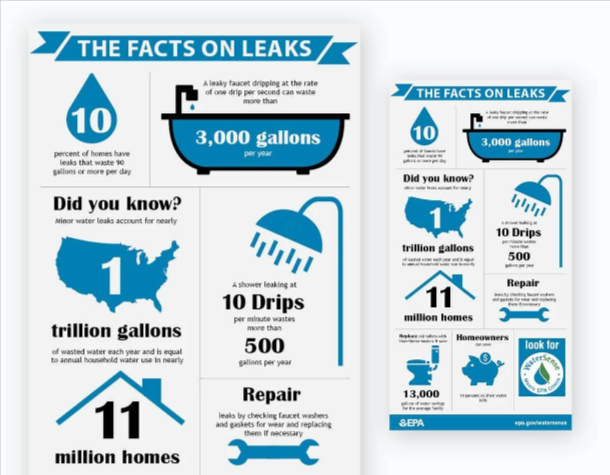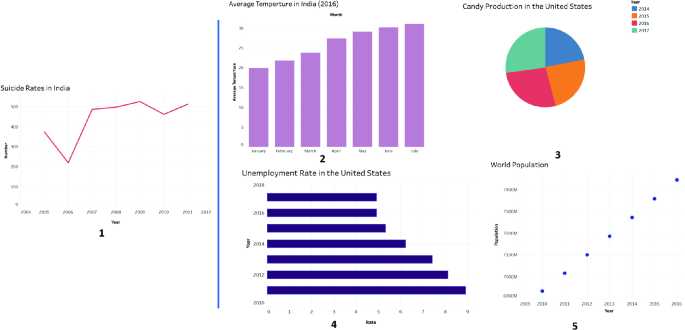Imagine Link Bai t as your favorite superhero, let’s call him “Caption Click”. He swoops in to save the day and grabs people’s attention online with cool pictures, catchy titles, and amazing ideas.
It’s like when the Caption clicks use his powers, he can keep you on the edge of your seat & draw more audience to your website.
Want to know more about this superhero (Link Baiting)? Read the write-up & get the details!
What is Link Bait?
Link Baiting is a strategy that is specially designed to attract attention and generate backlinks naturally.
It is like the trap that tempts users to click, share, and link back to the content organically.
Linkbait content is specially engineered to be highly shareable, informative, and entertaining.
The main benefit of link baiting is the ability to amplify website authority and increase search engine rankings.
After generating qualified links it signals search engines like Google that the content is highly valuable and authoritative which in turn drives the organic traffic and increases conversion rates.
Its effectiveness relies on genuine value and relevance to the target audience. By delivering high-quality link bait content, businesses can strengthen their online presence and community management.
Link baiting can help you generate exceptional returns on a single write-up by linking it again and again.
What is the Purpose of Link Bait?
Link bait’s main objective is to increase a website’s inbound link count, which can greatly boost your brand’s SEO efforts. Let’s examine link bait’s function:
- Improve Search Engine Rankings: Using link bait to attract high-quality links can improve a website’s search engine ranking. They use inbound links as a signal of a website’s authority and relevancy to amplify rankings.
- Traffic boosting: Content that is worthwhile, engaging, or controversial has the power to attract a large number of visitors from other websites and social media platforms, thereby boosting traffic to the website.
- Conversions and lead generation: Controversial, or intriguing content can attract a lot of visitors from other websites and social media platforms, boosting the volume of traffic to the website.
- Appreciating Social Sharing: Content that is interesting and entertaining is more likely to be shared on social media, it will increase its reach and number of backlinks.
- Strengthen Brand Awareness: By being shared and linked on various platforms, a well-written link bait will increase brand exposure and assist you in building your brand’s authority and recognition.
Why Does Link Bait Work?
Link bait works effectively because it leverages various psychological and social triggers that encourage people to share content.
- Social Content: People share content that increases their online presence and represents them as funny, knowledgeable, and interesting.
- Emotions: Content with different emotions positive or negative tends to be more shareable.
- Relatable Content: When the audience finds the content to be exactly as they are feeling in their daily life they can easily relate to content and people.
- Practical: Content that is practical, useful, and solves the problem is highly shareable. Let’s break down each of the “share triggers”
Incorporating Share Triggers
By understanding and incorporating these share triggers into their content strategies, marketers can create more engaging stuff. Here are some triggers:
- Identify the emotional core: Ascertain the main feeling you want your content to arouse, then craft it to have the greatest possible emotional impact.
- Know your audience: Make content that speaks to your target audience’s values, interests, and common experiences.
- Provide real value: Put your energy into producing helpful content, whether that be by providing guidance, teaching something new, or resolving an issue.
- Facilitate easy sharing: Add social media sharing buttons to your content and use calls to action to encourage users to share it easily.
8 Successful Link Bait Examples
1. Interactive Infographic:
Source:- blog.hubspot.com
Create an interactive infographic that lets users explore data in a visually appealing way.
For eg: Map out the evolution of cinema, from the earliest silent films to the advent of sound, color, CGI, and streaming services, with clickable points for major films, technological advancements, and industry trends
2. Quiz with a Twist:
Source:- youtube.com
Create a quiz that corrects common misconceptions and teaches in addition to having fun.
For eg: Develop a decision-making game where users are presented with scenarios and have to choose the best course of action. Each choice leads to different outcomes, helping users understand the consequences of their decisions.
3. Behind-the-Scenes Content:

For eg: Host virtual or in-person events for new product launches. Include demos, guest speakers, and special promotions to create buzz.
4. Visual Storytelling Series:
Use visually appealing images or videos to tell a compelling tale.
For Eg: Document rich cultural traditions and daily life in Mediterranean countries.
5. Ultimate Resource List:
Create a comprehensive list of resources, tools, or guides on a specific topic.
For eg: The Ultimate Guide to Sustainable Living: 100 Resources Every Eco-Warrior Should Know About”.
6. Data Visualization Experiment:
Conduct a one-of-a-kind study or experiment in your industry and visually communicate the results.
For eg: This could be anything from analyzing social media trends to surveying consumer preferences.
7. Crowdsourced Content:
Invite your audience to share their thoughts, stories, or experiences on a specific topic, and then compile them into a cohesive piece.
For eg: This could be a collection of industry experts’ advice or personal anecdotes about a popular news story.”Remote Work Mastery: Tips from Industry Experts”
8. Interactive Game or Simulation:
Develop an online game or simulation that allows users to experience a scenario relevant to their niche.
For Eg: A VR simulation for emergency responders that replicates various disaster scenarios such as earthquakes, floods, and fires.
How to Find Good Link Bait Ideas?
- Understand Your Audience: Before creating any content idea you should understand who your audience is. Use tools like Google Analytics, and social media insights to conduct various surveys to gather data.
- Leverage Content Research Tools: You can use content research tools to identify the trending content within your niche.
- BuzzSumo: Helps you find the most shared content on social media platforms.
- Google Trends: Provides insights into trending topics.
- AnswerThe Public: Generates questions and search queries related to your keywords.
- Exploding Topics: Identifies emerging trends before they become mainstream.
- Conduct Keyword Research: Relevant keywords can increase the visibility of your content and help you secure upward rankings.
- Brainstorm with Your Team: Organize brainstorming sessions with your team to generate innovative ideas. Encourage thinking outside the box and allow them to speak and consider how each idea could be transformed into valuable content.
- Engage with Influencers: Co-create content with industry influencers. Through their networks, influencers can help amplify your content and increase the number of backlinks.
- Utilize Content Curation: You can provide value to your audience while also attracting backlinks from those sources and others if you effectively organize and present this curated content.
How to do Link Baiting in SEO?
- Eye-Catching Titles: Choose attractive titles that create eagerness among users and attract them to visit your link.
- Strong Calls to Action (CTAs): Include clear CTAs encouraging users to take action, as they read more, share the content, or subscribe.
- Collaborate and Network: Choose to collaborate with influencers, experts, or other reputable sources to boost your content’s credibility and reach through their networks
- Leverage Trends and News: Always Stay informed & updated on current trends and news related to your industry and capitalize on them by creating content that adds value or provides a unique perspective.
Best Practices for Creating Link Bait
Content can be made much more appealing and shareable by producing content that readers can benefit from right away. Examples of useful content types are:
Tools and Widgets: Create basic tools or industry-specific widgets. Ahrefs, for example, provides several well-liked and heavily backlinked free tools, such as the Backlink Checker and Keyword Generator.
Forms and Checklists: Give your audience access to templates or checklists that they can download. These resources provide immediate benefits and save time.
Printable cheat sheets: To make it easier for users to refer to, create actionable cheat sheets that summarize difficult subjects or processes.
Create Opinionated Linkbait:
Adding captivating viewpoints or strong opinions to your writing can help it stand out. For example, consider:
- Opinion pieces: Express your distinct viewpoint on prevailing procedures or trends in your write-up. For example, Tim Soulo’s tirade against poor email outreach received a lot of attention and backlinks because of its strong opinions.
- Articles on Thought Leadership: Provide analysis and forecasts based on your experience, dispelling myths and presenting fresh concepts.
- Storytelling with Inspiration: Emotionally charged content is more likely to be shared. You can share your success & failure stories that inspire, amaze, and help others succeed.
- Employ Triggers That Emotions: Include things that make you feel angry, excited, or depressed. For instance, readers may identify strongly with articles about social issues or personal challenges.
Make Your Relevant Links Eye-Catching
Journalists and bloggers may take notice of your content if it is connected to current affairs. To accomplish this:
Timely Topics: Write about subjects that are currently popular or current events. Surveys and research on working remotely during the COVID-19 pandemic, for instance, were extensively reported.
Create a Story for Your Linkbait
Stories tend to resonate with people more than dry facts. Strategies for telling stories include the following:
Use case studies or personal narratives to weave your content. The narrative style employed in wealth management posts resulted in a large number of backlinks.
Create characters that will strengthen the audience’s emotional bond with the content.
Include what other people are already linking to.
Analyze why other similar pages have garnered backlinks and incorporate those elements into your content. Steps to do this include:
- Competitor Analysis: Use tools like Ahrefs to identify popular articles on your topic and examine their backlink profiles.
- Common Link Reasons: Look for patterns in the anchor texts and context of backlinks. For instance, if articles link to content because it provides detailed benefits, make sure to highlight the benefits in your content.
- Analysis of Competition: Find well-known articles on your subject and analyze the backlink profiles of these articles using tools such as Ahrefs.
- Typical Link Reasons: Examine the backlink context and anchor text for any patterns. If content offers detailed benefits and is linked to by other articles, for example, make sure your content emphasizes those benefits.
Parting Thoughts
Attracting inbound links is the main objective of link bait. In search engines like Google, these links are important measures of a website’s authority and relevance.
By putting these best practices into execution, companies can produce engaging content that increases traffic, leads, brand awareness, and online visibility, and strengthens the community, in addition to attracting backlinks.
A website’s entire digital marketing strategy and long-term SEO success can both be greatly aided by well-crafted link bait.









